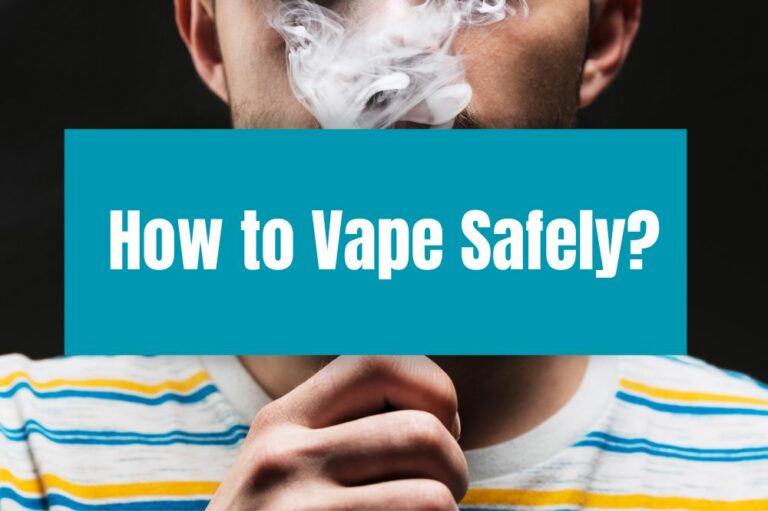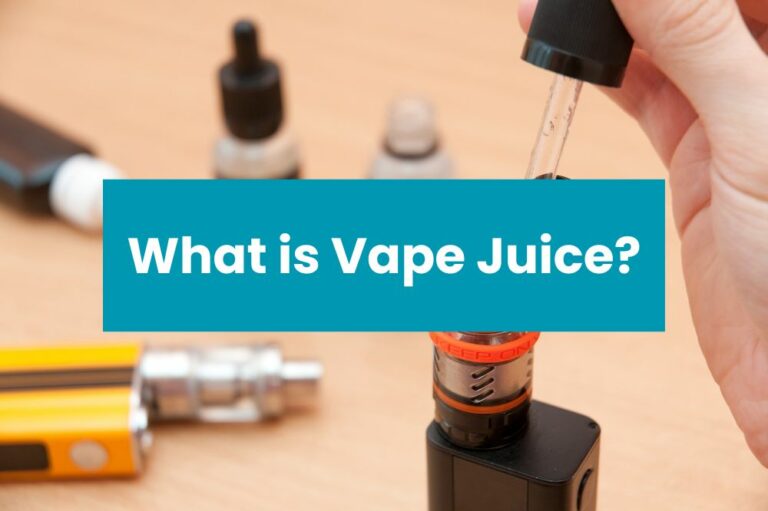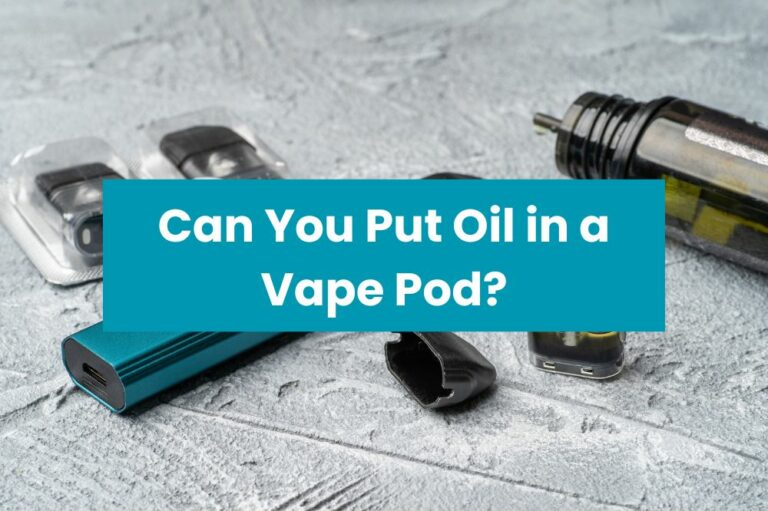What Do Vapes Do for Your Body?

Are you curious about the effects of vaping on your body? Vaping is a relatively new trend that has gained popularity in recent years, especially among young adults. However, many people are still unsure about what vaping does to their bodies. In this article, we will explore the effects of vaping on your body and provide you with the latest information available.
Vaping involves inhaling a vapor produced by an e-cigarette device deep into your lungs. Vaping devices contain an oil, often called vape juice, to which nicotine and any number of potentially harmful chemicals are added for flavoring or to create a certain aroma, like cotton candy or blueberry. Although vaping is often marketed as a safer alternative to smoking, the truth is that it can have serious health consequences. In fact, vaping has been linked to lung damage, addiction, and other health problems.
In this article, we will examine the latest research on the effects of vaping on your body. We will look at the potential risks and benefits of vaping, as well as the long-term effects of vaping on your health. Whether you are a seasoned vaper or considering trying it for the first time, this article will provide you with the information you need to make an informed decision about your health.
What is Vaping
If you’re wondering what vaping is, it’s the act of inhaling vapor produced by an electronic cigarette or similar device. This vapor is created by heating a liquid that usually contains nicotine, flavorings, and other chemicals. Vaping devices come in different shapes and sizes, but they all have a battery, a heating element, and a tank or cartridge that holds the liquid.
Vaping is often marketed as a safer alternative to smoking traditional cigarettes, but it’s important to note that it’s not risk-free. The liquid used in vaping devices contains chemicals that can be harmful to your health, and the long-term effects of vaping are still not fully understood.
SPIRITBAR Katana BP10000
- Slender, leather-textured body reminiscent of a katana handle for an authentic samurai feel
- Unique samurai-inspired e-liquid flavor - fruity yet not too sweet, with a luxurious, elegant aroma
- Powerful 650mAh rechargeable battery for extended vaping time
- Large 18ml e-liquid capacity and 10,000 puff capacity
- Advanced mesh coil and e-liquid & power display screens for optimal vaping experience
The special juice captures the essence of the samurai spirit with its rich, smoothly pulsating flavor that brings new satisfaction with every puff. The device's slender, leather-textured design evokes the grip of a samurai's katana, making this product a perfect choice for beginner vapors.
One of the main concerns with vaping is the nicotine content. Nicotine is highly addictive and can have a negative impact on your cardiovascular system. Vaping can also cause lung damage and breathing problems. Inhaling the vapor can irritate your lungs, and some studies have shown that it can cause inflammation and damage to the lining of your airways.
Overall, vaping is not a safe or healthy habit. While it may be less harmful than smoking traditional cigarettes, it’s still important to be aware of the risks and to make an informed decision about whether or not to use these devices.
The Science Behind Vaping
Vaping is the act of inhaling and exhaling the aerosol, often referred to as vapor, produced by an e-cigarette or similar device. The vapor is created from a liquid, which is heated by a battery-powered atomizer. The liquid used in vaping is often called e-juice, vape juice, or e-liquid.
Components of Vape
The e-juice used in vaping typically contains a mixture of propylene glycol, vegetable glycerin, flavorings, and nicotine. Propylene glycol and vegetable glycerin are used as carriers for the flavorings and nicotine. The flavorings used in e-juice are typically food-grade and are the same flavorings used in many food products. Nicotine is an addictive substance that is found in tobacco and is also used in many e-juices.
SPIRITBAR Jack’s Flask 9000 Puffs
- Stylish pirate flask-shaped body providing an exciting vaping experience
- Delivering up to 9000 puffs per device
- 20ml e-liquid capacity with 50mg nicotine strength for satisfying throat hit
- Specialized pirate-themed e-juice flavors for rich, swirling taste
- Premium mesh coil optimizes flavor profile for maximum vaping enjoyment
This disposable vape captures the daring spirit of the high seas with its flask styling and signature pirate e-juice flavors. The extraordinary battery life provides 9000 indulgent puffs for extended vaping pleasure. Live boldly and freely with the Jack's Flask - a legendary vaping experience fit for a pirate's adventures.
The atomizer, or heating element, is powered by a battery and heats the e-juice to create the vapor. The atomizer is typically made up of a coil of wire wrapped around a wick, which is saturated with e-juice. When the battery is activated, the coil heats up and vaporizes the e-juice.
Vaping Process
When you take a puff from a vape device, the battery activates the atomizer, which heats up the e-juice and creates vapor. The vapor is then inhaled into your lungs and exhaled. The process of inhaling and exhaling the vapor is often referred to as “vaping.”
The effects of vaping on the body are still being studied, but there are some known risks. The aerosol produced by vaping can contain harmful chemicals, such as formaldehyde, acetaldehyde, and acrolein, as well as heavy metals like lead and nickel. Vaping can also cause irritation of the throat and lungs, as well as increased heart rate and blood pressure.
In conclusion, vaping involves heating a liquid to create an aerosol that is inhaled into the lungs. The liquid used in vaping typically contains a mixture of propylene glycol, vegetable glycerin, flavorings, and nicotine. While the long-term effects of vaping are still being studied, there are known risks associated with the practice.
Short Term Effects of Vaping
Vaping can have several short-term effects on your body. In this section, we will discuss two of the most common short-term effects of vaping: respiratory impact and cardiovascular impact.
Respiratory Impact
When you inhale the aerosol produced by vaping, it can irritate your airways and cause inflammation in your lungs. This can lead to coughing, wheezing, and shortness of breath. In some cases, it can also cause bronchitis-like symptoms. The liquid used in vaping devices can also contain harmful chemicals that can damage your lungs.
Cardiovascular Impact
Vaping can also have a significant impact on your cardiovascular system. The nicotine in vaping liquids can cause your blood vessels to narrow, which can increase your blood pressure and heart rate. This can put extra strain on your heart and increase your risk of heart disease.
In addition, the flavorings used in e-cigarettes can also have an impact on your heart health. Some flavorings have been found to cause inflammation in the blood vessels, which can increase your risk of heart disease.
It is important to note that the short-term effects of vaping can vary depending on the individual and the frequency and duration of vaping. If you experience any symptoms or have concerns about the impact of vaping on your health, it is important to speak with a healthcare professional.
SPIRITBAR Katana BP10000
- Slender, leather-textured body reminiscent of a katana handle for an authentic samurai feel
- Unique samurai-inspired e-liquid flavor - fruity yet not too sweet, with a luxurious, elegant aroma
- Powerful 650mAh rechargeable battery for extended vaping time
- Large 18ml e-liquid capacity and 10,000 puff capacity
- Advanced mesh coil and e-liquid & power display screens for optimal vaping experience
The special juice captures the essence of the samurai spirit with its rich, smoothly pulsating flavor that brings new satisfaction with every puff. The device's slender, leather-textured design evokes the grip of a samurai's katana, making this product a perfect choice for beginner vapors.
Long Term Effects of Vaping
Vaping is often marketed as a safer alternative to smoking traditional cigarettes. However, the long-term health effects of vaping are still largely unknown. Here are some potential long-term effects of vaping:
Potential for Addiction
Many e-cigarettes contain nicotine, which is highly addictive. Nicotine can cause changes in the brain that lead to addiction and withdrawal symptoms. Vaping high-nicotine e-cigarettes could worsen the effects of nicotine exposure, which can harm brain development, alter nerve cell functioning, increase the risk of young people smoking cigarettes, and change brain chemistry in ways that make adolescent brains more susceptible to other addictive substances.
Potential for Lung Disease
Although e-cigarettes do not contain tobacco, they do contain harmful chemicals, including heavy metals, volatile organic compounds, and ultrafine particles that can be inhaled deep into the lungs. One study showed that e-cigarette vapor can cause DNA damage, inflammation, and cell death in cells from various parts of the body. Another study found that vaping can cause lung injuries similar to those seen in people who have been exposed to toxic chemicals.
Furthermore, there is evidence that vaping can increase the risk of respiratory infections, such as pneumonia. Vaping can also cause a condition called “popcorn lung,” which is a type of lung disease that can cause coughing, wheezing, and shortness of breath.
Overall, the long-term effects of vaping are still largely unknown. While vaping may be less harmful than smoking traditional cigarettes, it is not without risks. If you are considering vaping, it is important to be aware of the potential risks and to make an informed decision about your health.
Vaping and Youth
Vaping has become increasingly popular among youth in recent years. Here are some important things to know about youth vaping.
Trends in Youth Vaping
According to the CDC, in 2020, about 1 in 5 high school students in the United States reported using e-cigarettes in the past month. This means that millions of young people are using e-cigarettes, and the trend is continuing to grow.
Health Impacts on Youth
Vaping can have serious health impacts on youth. Most e-cigarettes contain nicotine, which is highly addictive and can harm the developing brain. Nicotine exposure during adolescence can also increase the risk of addiction to other drugs and substances.
In addition to nicotine, e-cigarettes can also contain other harmful chemicals such as heavy metals, volatile organic compounds, and ultrafine particles that can be inhaled deep into the lungs. These chemicals can cause a range of health problems, including respiratory issues, heart disease, and cancer.
It’s important to note that the long-term health effects of vaping are still not fully understood, and more research is needed to fully understand the risks associated with youth vaping.
If you or someone you know is struggling with nicotine addiction or is considering using e-cigarettes, it’s important to talk to a healthcare provider or a trusted adult for support and guidance.
Vaping vs Smoking
If you’re a smoker and considering switching to vaping, you may wonder if it’s a healthier alternative. While both smoking and vaping involve inhaling chemicals into your lungs, vaping is generally considered less harmful than smoking.
According to Johns Hopkins Medicine, vaping is less harmful than smoking, but it’s still not safe. E-cigarettes heat nicotine (extracted from tobacco), flavorings, and other chemicals to create an aerosol that you inhale. Regular tobacco cigarettes contain 7,000 chemicals, many of which are toxic. In contrast, e-cigarettes contain fewer chemicals, and the chemicals they do contain are generally considered less harmful than those in tobacco cigarettes.
However, it’s important to note that the long-term effects of vaping are still not fully understood. While vaping is less harmful than smoking, it’s not completely safe. Vaping can still expose you to chemicals that can harm your health, and some studies have suggested that vaping can increase your risk of lung problems.
Another issue with vaping is that it can be addictive. Like smoking, vaping delivers nicotine to your body, which can lead to addiction. In fact, some studies have suggested that vaping can be even more addictive than smoking.
Overall, if you’re a smoker and you’re considering switching to vaping, it’s important to do your research and talk to your doctor. While vaping may be less harmful than smoking, it’s not completely safe, and the long-term effects are still not fully understood.
Regulation and Safety Concerns
When it comes to vaping, there are a few regulations and safety concerns that you should be aware of. Here are some important points to keep in mind:
- Age Restrictions: The U.S. Food and Drug Administration (FDA) has regulations in place to prevent minors from purchasing e-cigarettes or vaping products. It is illegal to sell these products to anyone under the age of 21.
- Ingredients: E-cigarettes contain a variety of chemicals, including nicotine, which is highly addictive. While e-cigarettes are generally considered to be less harmful than traditional cigarettes, they are not without risks. Some of the chemicals in e-cigarettes have been linked to lung damage, heart disease, and other health problems.
- Manufacturing Standards: The FDA also regulates the manufacturing standards for e-cigarettes and vaping products. This includes requirements for labeling, packaging, and advertising.
- Quality Control: It is important to purchase e-cigarettes and vaping products from reputable sources to ensure that they are of high quality. Poorly made products can be dangerous and may not work as intended.
- Battery Safety: E-cigarettes are powered by batteries, which can be dangerous if not handled properly. Always follow the manufacturer’s instructions for charging and using your e-cigarette, and never leave it unattended while charging.
Overall, while vaping may be considered a safer alternative to smoking traditional cigarettes, it is important to be aware of the regulations and safety concerns associated with these products. By following the guidelines set forth by the FDA and using caution when using e-cigarettes, you can minimize your risk of harm and enjoy the benefits of vaping.








